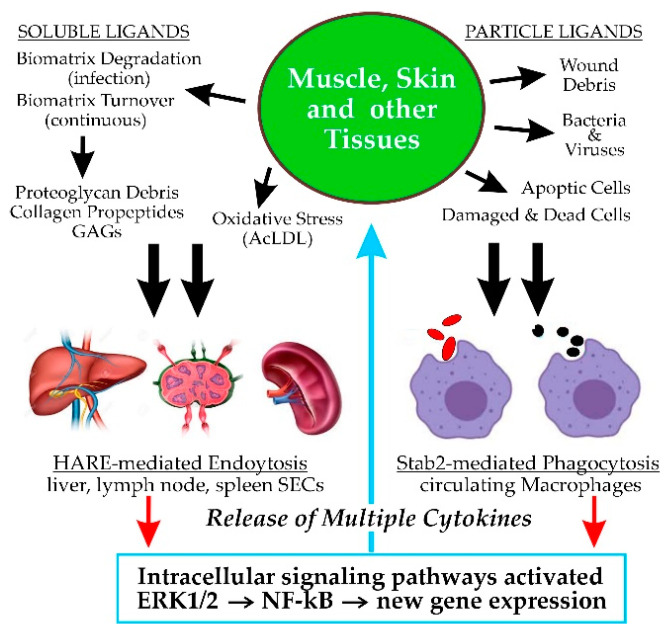Figure 9.
A HARE/Stab2 Tissue-Stress Sensor System. The scheme [84] shows parallel systemic loops in which intracellular signaling is stimulated by HARE-mediated endocytosis (left) of four key soluble ligands (HA, Hep, DS and AcLDL) or by Stab2-mediated phagocytosis of particulate debris or cells (right). These signaling cascades activate genes regulated by NF-κB promoters (red arrows) stimulating synthesis and secretion of pro-inflammatory cytokines such as Transforming Growth Factor-β (TGFβ) [18,50] that can direct new tissue responses (blue arrows) to the physiologic or homeostatic threats [85,86,87]. Soluble ligands shed from body tissues during infection, necrosis or biomatrix turnover are endocytosed by fixed SECs in the liver, lymph nodes and spleen (left). Particle phagocytosis by circulating macrophages (right) removes and destroys apoptotic red or white blood cells (red ovals), wound debris and bacterial cells (black ovals).

